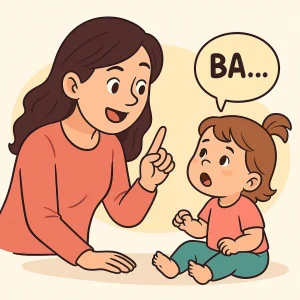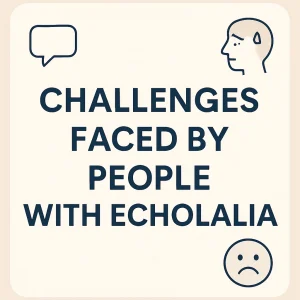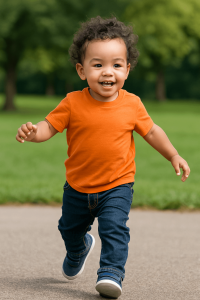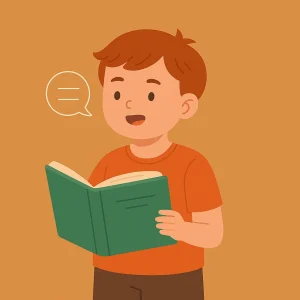Understanding Baby Talk: Is It Good or Bad for Child Growth?
By Rajini D
Last Updated: July 1, 2024
Welcome to our latest exploration at Wellness Hub, where we delve into a topic close to the hearts of many parents and caregivers: baby talk. This age-old practice, characterized by the high-pitched, sing-song cadence many of us adopt when talking to little ones, has sparked much debate. Is it a cornerstone in building the foundation of a child’s language skills, or does it hinder their linguistic development? With voices on both sides of the argument presenting compelling arguments, the discussion around baby talk is more relevant than ever.
In this article, we aim to shed light on the impact of baby talk on child growth, drawing from a wealth of expert opinions and rigorous research. Our goal is simple yet profound: to provide you with insights that not only inform but also empower you. As we navigate through the nuances of infant-directed speech—often lovingly called baby talk—we’ll explore its benefits and potential pitfalls. By combining scientific findings with practical advice, we hope to offer a balanced perspective that resonates with the experiences of parents and caregivers alike.
The Basics of Baby Talk
let’s start with the basics of baby talk. Often heard as a melodic, high-pitched cooing when adults interact with infants, baby talk, or what scientists refer to as infant-directed speech stands out from our everyday conversations. This distinctive way of speaking is not just about using simpler words or a softer tone; it’s a whole different language designed intuitively to connect with our youngest communicators.
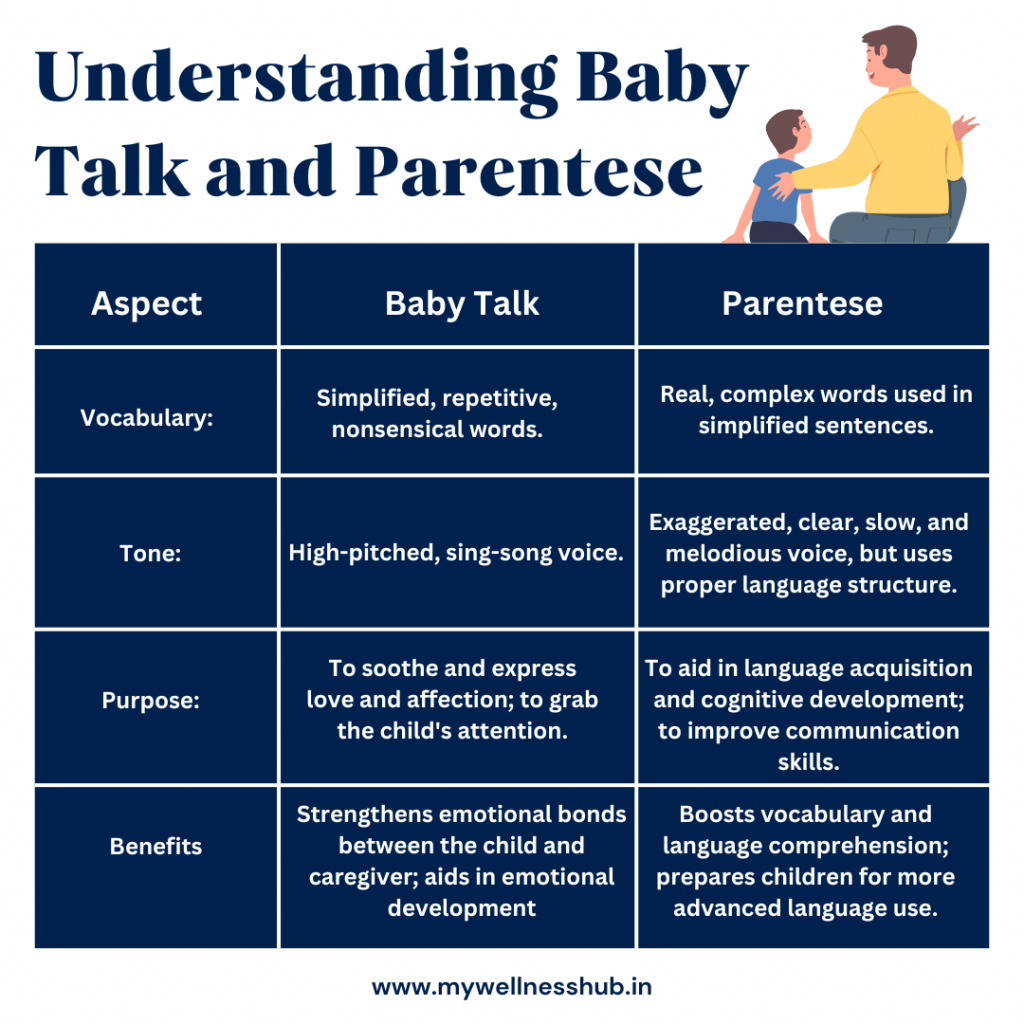
But not all baby talk is created equal. Enter “Parentese,” a beneficial variant of baby talk that may sound similar but is grounded in clear, grammatically correct speech patterns. Unlike traditional baby talk, which often comprises made-up words or overly simplified language, Parentese maintains the structure of adult language but uses exaggerated sounds, pitches, and emotions to engage the baby’s attention. It’s like rolling out a red carpet for language learning, inviting infants to tune into the rhythm and melody of speech.
Why do we gravitate towards this sing-song dialogue with infants? It’s hardwired in us. Engaging in baby talk is a universal trait, a language of love and bonding that transcends cultures worldwide. This instinctual tool not only fosters a deep emotional connection between adults and babies but also plays a crucial role in cognitive development. The exaggerated tones and clear articulation in Parentese help babies discern phonetic components of their native language, laying the groundwork for early word recognition and language acquisition.
The impact of baby talk on a child’s emotional and cognitive development is profound. Studies have shown that engaging in Parentese promotes brain regions associated with language processing and social bonding. By capturing a baby’s attention and holding it, we’re not just amusing them; we’re teaching them. This interaction encourages babies to practice the give-and-take of conversation, understand the power of emotional expression, and begin the lifelong journey of language learning.
The Pros of Baby Talk
Enhancing Emotional Connection
The very act of engaging in baby talk, with its high-pitched tones and exaggerated expressions, is more than just a way to communicate; it’s a bridge to a deeper emotional connection between parents and their children. This form of communication signals safety, affection, and attention, creating a nurturing environment where children feel loved and valued. By instinctively tuning into this special mode of speech, parents and caregivers are essentially telling their babies, “You are important to me.”
Wellness Hub underscores the significance of these early interactions. The emotional resonance of a parent’s voice in baby talk mode is akin to an embrace, wrapping the child in a sense of security and belonging. This emotional groundwork lays the foundation for a child’s social and emotional development, influencing their ability to form healthy relationships throughout their life.
Boosting Language Skills
Turning our focus to the cognitive realm, baby talk, and specifically Parentese, is instrumental in language acquisition and development. Research supports the idea that the distinctive, melodic quality of Parentese holds infants’ attention more effectively than standard adult speech. This heightened engagement encourages more frequent vocalizations and interactions from the child, which are essential components of early language learning.
Benefits of Parentese: Research Findings
| Age Group | Study Findings | Implications |
|---|---|---|
| 0-6 Months | Infants show increased brain activity in areas associated with language processing. | Early exposure to Parentese supports foundational language skills and brain development. |
| 6-12 Months | Babies exposed to Parentese more frequently babbled and had more words by 12 months. | Frequent use of Parentese during this stage can accelerate verbal milestones and language comprehension. |
| 12-18 Months | Children exposed to higher amounts of Parentese understood more words and started forming simple sentences earlier. | Parentese contributes to enhanced vocabulary and early sentence formation, setting the stage for more complex language use. |
| 18-24 Months | Studies indicate better linguistic and cognitive skills in toddlers frequently engaged with Parentese. | Continued engagement with Parentese fosters advanced cognitive and linguistic development, preparing children for more complex communication and learning. |
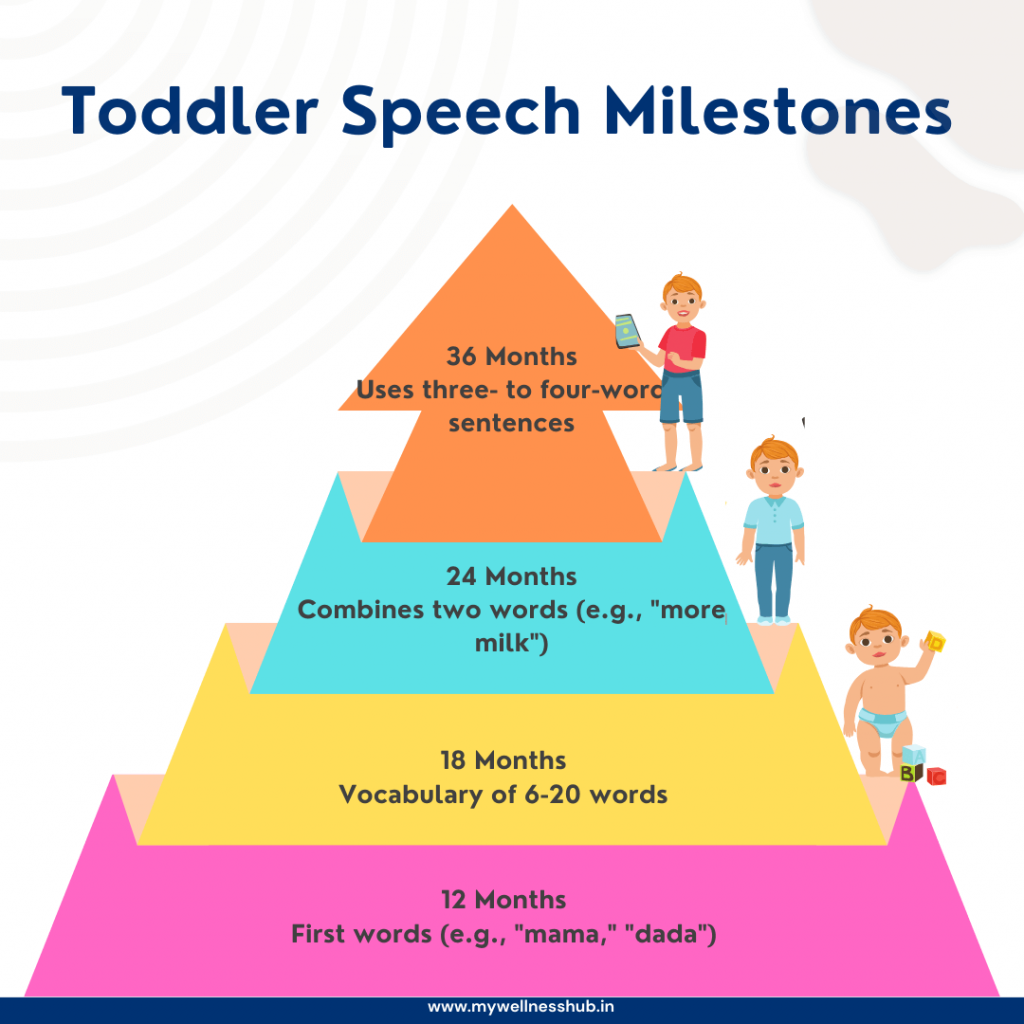
Also read: Understanding Toddler Speech: Speech Milestones at 18 Months
The Cons of Baby Talk
Potential for Miscommunication
One of the primary concerns surrounding excessive or incorrect baby talk is the potential for miscommunication. When baby talk deviates significantly from the structure of standard language—through the use of made-up words or overly simplified language—it may, paradoxically, obstruct the child’s language development. The crux of the issue lies in the confusion that can arise when children are exposed to vocabulary and grammar that don’t align with what they encounter in the broader world.
Knowing When to Evolve
As children grow, their ability to understand and produce language evolves at a remarkable pace. This developmental trajectory underscores the necessity for the language used by parents and caregivers to adapt accordingly. The transition from baby talk to more complex forms of speech is not just beneficial but essential. It reflects the child’s expanding cognitive abilities and supports their gradual integration into more diverse social contexts.
Recognizing the right moment to shift from Parentese to more sophisticated dialogue involves being attuned to the child’s developmental cues. As toddlers begin to form sentences and engage in more complex interactions, it’s a signal for caregivers to gradually introduce a broader vocabulary and more complex sentence structures. This evolution in communication supports the child’s cognitive development, encouraging linguistic proficiency and confidence.
Striking the Right Balance
Navigating the transition from baby talk to Parentese is a crucial step in promoting healthy language development for your child. This adjustment not only supports their burgeoning speech capabilities but also deepens the connection between you and your child through enriched communication.
Transitioning from Baby Talk to Parentese
Parentese, characterized by its clear pronunciation, higher pitch, and elongated vowels, is more than just a modified version of baby talk. It’s a strategic approach to engage your child’s attention and foster linguistic growth. Here are some tips for using Parentese effectively:
- Exaggerate Sounds: Make your speech more melodic and lively. This doesn’t mean using babyish words but rather emphasizing keywords clearly and with enthusiasm.
- Slow Down: Speak at a slower pace to give your child time to process the sounds and meanings of words. This also helps in modeling the pronunciation of words more accurately.
- Use Real Words: While it’s tempting to revert to cutesy vocabulary, using the correct terms for objects and actions helps your child learn language more effectively. For example, say “water” instead of “wawa”.
- Engage in Turn-Taking: Encourage your child to respond during conversations, even if their “reply” is simply babbling or gesturing. This teaches the rhythm and flow of natural speech.
- Be Expressive: Use facial expressions and gestures to complement your words. This multisensory approach reinforces language learning and makes communication more engaging for your child.
Signs It’s Time to Shift Your Speaking Style
As your child grows, their language needs will evolve. Recognizing the signs that it’s time to adjust your communication style is key to supporting their development effectively. Here are several developmental milestones to watch for:
- Increased Vocabulary: When your child begins to use a variety of words and attempts to form sentences, it’s a clear signal to start incorporating more complex language into your interactions.
- Response to Questions: If your child responds to questions or follows simple instructions, this indicates an understanding of language that can be further developed through more sophisticated speech patterns.
- Imitation of Adult Speech: Children who start mimicking adult speech are demonstrating readiness for more advanced language models. This is an opportune time to introduce new vocabulary and sentence structures.
- Curiosity About the World: As children become more curious about their surroundings, introducing new words and concepts in your conversations can significantly boost their language and cognitive skills.
- Emotional and Social Development: As your child’s social interactions become more complex, adapting your speech to include more nuanced expressions of emotion and social concepts supports their overall development.
When to Transition: Understanding Your Child’s Cues
| Developmental Milestones | Examples of Cues | How to Respond |
|---|---|---|
| First Words | Child uses simple words like “mama” or “dada”. | Begin to introduce more complex vocabulary in your responses, still using Parentese for clarity. |
| Following Instructions | Child can follow simple, one-step instructions. | Use more directive language in Parentese, incorporating verbs and actions to encourage understanding. |
| Increased Vocabulary | Child starts using a variety of words. | Engage in more complex conversations, introduce new words, and encourage the child to repeat them. |
| Forming Simple Sentences | Child begins to combine words into short sentences. | Start modeling longer sentences and introduce the concept of questions to encourage dialogue. |
| Showing Curiosity | Child asks questions or points at objects wanting to know more. | Use these opportunities to expand on their vocabulary and knowledge, providing detailed explanations. |
| Emotional Expression | Child expresses feelings with words. | Validate their feelings with empathetic communication and teach them more words to express emotions. |
Incorporating Baby Talk into Your Daily Routine
Integrating baby talk and Parentese into daily routines can significantly enrich your child’s language skills, fostering a nurturing environment for their development.
Everyday Interactions as Learning Moments
- Narrate Your Day: From morning routines to evening chores, describe your actions and surroundings in Parentese. This not only introduces new vocabulary but also models sentence structure in a way that’s engaging for your child. For example, while preparing a meal, you might say, “Now, we’re cutting the carrots into tiny pieces!”
- Read Together: Select books with vibrant pictures and simple texts to read aloud. Use Parentese to emphasize and animate the story, asking questions and encouraging your child to point to and name objects.
- Sing Songs and Rhymes: Music is a universal language. Singing nursery rhymes and simple songs incorporates rhythm and repetition, two elements that aid memory and language acquisition. Emphasize the melody of your voice and watch as your child becomes mesmerized, learning effortlessly.
- Be Responsive: Engage in back-and-forth interactions by responding to your child’s sounds, gestures, and, eventually, words. This teaches conversational turns and shows that their attempts at communication are valued.
- Use Technology Wisely: While face-to-face interaction is paramount, selectively using apps or programs designed for language learning can reinforce skills. Wellness Hub provides resources and recommendations for parents seeking the best educational tools.
Conclusion
As we close our discussion on baby talk and Parentese, it’s important to remember that both have their place in helping children grow. Baby talk helps build a strong emotional connection between you and your child, which is vital for their sense of security. Parentese, on the other hand, helps your child learn how to speak clearly and understand language better. It’s not about choosing one over the other but using both to support your child’s development.
Here at Wellness Hub, we believe in a balanced approach that combines the warmth of baby talk with the educational benefits of Parentese. By mixing these methods, you can help your child feel loved while also boosting their language skills. Keep in mind that every word you share with your child helps them learn and grow in a happy, healthy environment.
Frequently Asked Questions:
1. What is baby talk and how does it differ from Parentese?
Baby talk involves the instinctual, simplified language used by parents with their babies, often characterized by a high pitch, repetitive sounds, and nonsensical words. Parentese, while also melodious and engaging, involves using real words, correct grammar, and exaggerated vocal cues to aid language learning. Unlike baby talk, Parentese is designed to enhance a child’s linguistic development by modeling proper speech.
2. Why do experts recommend Parentese for child development?
Experts recommend Parentese because it actively engages children in the language learning process, using clear and distinct pronunciation that helps in understanding words and their meanings. This method not only attracts a child’s attention with its unique intonation but also significantly boosts their vocabulary and grammar skills by providing a solid foundation in their native language.
3. When should I start using Parentese with my baby?
It’s beneficial to start using Parentese from the moment your baby is born. Early exposure to Parentese has been shown to improve a baby’s attentiveness to speech and their ability to distinguish sounds, which are critical steps in the early stages of language development. This approach supports cognitive development and can lead to earlier verbal communication from infants.
4. Can baby talk negatively impact my child’s language skills?
While baby talk is a natural part of parent-infant bonding, exclusively using simplified or made-up language can delay a child’s exposure to proper vocabulary and grammar. Transitioning to Parentese helps mitigate this by introducing children to correct language structures, thereby supporting a more comprehensive language development pathway.
5. How can I integrate Parentese into daily activities with my child?
Incorporating Parentese into daily activities can be as simple as narrating your actions during routine tasks, reading books with expressive intonation, singing songs, and having interactive conversations with your child. These practices not only enrich your child’s language skills but also strengthen your bond by making communication a constant part of your interaction.
6. What are the signs it’s time to evolve from baby talk to more complex language?
Key indicators include your child beginning to mimic words and phrases, responding to simple questions, showing understanding of instructions, and using a growing number of understandable words. These milestones suggest your child is ready for more complex language input, making it an ideal time to shift towards more advanced verbal interactions.
7. How does Wellness Hub assist parents in utilizing baby talk and Parentese effectively?
Wellness Hub provides an extensive range of resources aimed at helping parents understand and apply baby talk and Parentese in ways that support their child’s developmental needs. From expert articles and parenting tips to interactive guides, Wellness Hub equips parents with the knowledge to use these communication strategies to foster their child’s language and emotional development.
8. Is there a risk of baby talk affecting my child’s social skills?
While baby talk is crucial for emotional development and bonding in the early months, balancing it with Parentese as your child grows ensures they learn proper language use, which is essential for social interactions. Adequately transitioning to more structured speech helps in developing effective communication skills, vital for socializing with peers and adults.
9. How does the transition from baby talk to Parentese affect a child’s future academic performance?
The transition from baby talk to Parentese plays a significant role in a child’s linguistic foundation, which is closely linked to future academic success. Early exposure to Parentese has been associated with better vocabulary acquisition, reading skills, and overall communication abilities. By fostering early language development through Parentese, parents can give their children a head start in literacy and cognitive skills necessary for academic achievement.
10. Can the use of Parentese benefit children with developmental delays or speech disorders?
Yes, Parentese can be particularly beneficial for children experiencing developmental delays or speech disorders. Its clear, slow, and exaggerated speech patterns can make it easier for these children to grasp language concepts and sounds. Parentese can enhance speech therapy practices by reinforcing the sounds and structures being taught and providing a supportive linguistic environment that encourages speech and language development in children with special needs.
About the Author:
Rajini Darugupally
M.Sc., Speech-Language Pathologist (9+ years of experience)
Rajini is a passionate and dedicated Speech-Language Pathologist with over 9+ years of experience, specializing in both developmental speech and language disorders in children and rehabilitation in adults. Driven by a desire to empower each individual to find their voice, Rajini brings a wealth of experience and a warm, genuine approach to therapy. Currently, at Wellness Hub, she thrives in a team environment that values innovation, compassion, and achieving results for their clients.
Book your Free Consultation Today
Parent/Caregiver Info:
Client’s Details:
* Error Message
